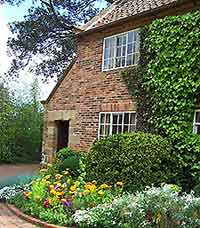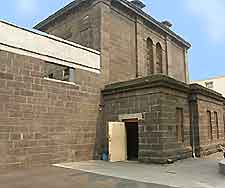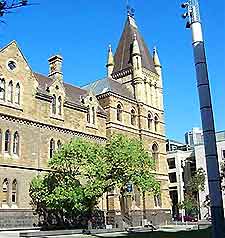Melbourne History Facts and Timeline
(Melbourne, Victoria - VIC, Australia)

As one of the few Australian cities that was not founded as a penal colony, Melbourne has enjoyed a fairly prosperous rise from its Victorian gold rush boom through to its modern role as Australia's top sporting city. It is also one of the country's key financial and business centres.
Melbourne's modern history is marked as much by economic growth and development as it is by ethnic diversity. Today, the city's four million residents come from more than 100 different racial and cultural backgrounds.
Sketchy Beginnings
Like most other early colonies in Australia, Melbourne was chosen for settlement in a bid to thwart the French from putting down any roots in the region. In 1835, Australian businessman John Batman, a leading member of a group from Tasmania who wanted to expand the territory's holdings, negotiated to buy some 600,000 acres / 242,800 hectares of land from local Aboriginals.
The government of New South Wales quickly annulled that treaty and during the late 1830s and early 1840s, the Aboriginal people who lived in the surrounding region were systemically stripped of their land. Less than 700 Aboriginals remained by 1844, marking a rather dark chapter in Melbourne's early history.

Gold Rush in Victoria
In 1851, the gold rush of Victoria gave the settlement in Melbourne a much-needed economic boost. The town provided most of the services for the miners and all of the transportation of the riches. Within just a few months, the population of the city doubled, and by 1865 it was more densely populated than
Sydney.
Diversity and Prosperity
The gold rush brought in thousands of immigrants from all over the world, including many Chinese, whose Chinatown (founded in 1851) remains one of the world's oldest. The years that followed helped build most of the city's grand buildings like the Treasury Building, the Parliament House and also the Queen Victoria Market.
By the time that the gold boom peaked in the 1880s, Melbourne had made history as the world's wealthiest city. Its Royal Exhibition Building hosted two World Expos during this decade. The Melbourne Cricket Club was known across the globe and sporting spectacles like the Melbourne Cup were established yearly events.

The Big Bust
The 1890s were a rough decade for Australia. An unintended effect of promoting Melbourne as the world's greatest city was that property prices skyrocketed and eventually collapsed. The depression that followed left the city stagnant for many years.
Return to Glory
It wasn't until the 1930s that Melbourne began to recover. Flinders Street Station returned as the world's busiest railway station in 1927, and by 1940 the city's tram network was the largest on the planet. Post-war immigration brought a huge influx of new ethnicity to the city and a renewed place in the global spotlight.
Melbourne hosted the Summer Olympics in the year of 1956. Suburban expansion soon became a major focus at this time and the downtown core saw a wave of skyscraper construction.
Financial and mining booms around 1970 lured some major companies to the city, and recent years have seen no suggestion of an end to Melbourne's economic development. With an emphasis on sports tourism, the city now hosts the Australian F1 Grand Prix and has several huge projects in the works focusing on inner-city urban revival.
 As one of the few Australian cities that was not founded as a penal colony, Melbourne has enjoyed a fairly prosperous rise from its Victorian gold rush boom through to its modern role as Australia's top sporting city. It is also one of the country's key financial and business centres.
As one of the few Australian cities that was not founded as a penal colony, Melbourne has enjoyed a fairly prosperous rise from its Victorian gold rush boom through to its modern role as Australia's top sporting city. It is also one of the country's key financial and business centres.
